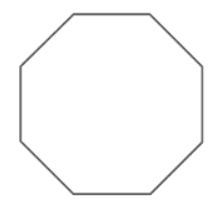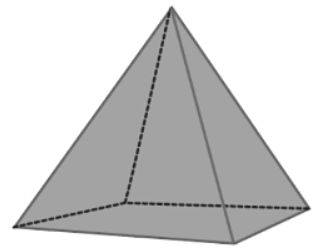Class 2 Exam > Class 2 Notes > Aptitude Reasoning > Worksheet: Geometrical Shapes
Worksheet: Geometrical Shapes | Aptitude Reasoning - Class 2 PDF Download
Q1: Identify the shape in the given figure.
Q2: Write the name of the following shapes.
Q3: Count the number of edges, vertices and faces for the following shape.
Q4: What is the shape of a decagon?
Q5: What is the shape of the following figure?
Q6: Find the number of triangles in the given figure.
Q7: How many corners are there in the following shape?
Q8: How many edges does the following shape have?
Q9: Count the number of squares in the following figure. Q10: What is the name of the following shape?
Q10: What is the name of the following shape?
You can access the solutions to this worksheet here.
The document Worksheet: Geometrical Shapes | Aptitude Reasoning - Class 2 is a part of the Class 2 Course Aptitude Reasoning.
All you need of Class 2 at this link: Class 2
|
6 videos|11 docs|7 tests
|
FAQs on Worksheet: Geometrical Shapes - Aptitude Reasoning - Class 2
| 1. What are the basic geometrical shapes? |  |
Ans. The basic geometrical shapes include circles, squares, rectangles, triangles, and polygons. Each shape has unique properties such as the number of sides, angles, and symmetry.
| 2. How do you calculate the area of different geometrical shapes? |  |
Ans. The area can be calculated using specific formulas for each shape: for a rectangle, multiply length by width; for a triangle, use 0.5 times base times height; and for a circle, use π times radius squared.
| 3. What is the difference between 2D and 3D geometrical shapes? |  |
Ans. 2D shapes have only two dimensions (length and width), such as squares and circles, while 3D shapes have three dimensions (length, width, and height), like cubes and spheres.
| 4. How can I identify different geometrical shapes in everyday life? |  |
Ans. You can identify shapes by observing objects around you. For example, a clock is circular, a book is rectangular, and a soccer ball is spherical. Look for sides, angles, and curves to classify them.
| 5. Why are geometrical shapes important in mathematics and real life? |  |
Ans. Geometrical shapes are fundamental in mathematics as they help in understanding space and form. In real life, they are essential in architecture, engineering, art, and design, influencing how we build and perceive our environment.
Related Searches
















